Are you trying to measure DC voltage, but your multimeter isn’t displaying any readings? If so, you’re not alone. Many people who are new to using a digital multimeter find troubleshooting technical issues can be daunting. Fortunately, the process of resolving this issue is simpler than it may seem. In this blog post we’ll break down why multimeters aren’t reading DC voltage and what steps you need to take in order to get reliable output from your device. By the end of this post, you will have a thorough understanding of how to diagnose and fix problems related to failed measurement attempts with multimeters for DC voltage measurements!
Reasons Why Multimeter Not Reading DC Voltage
Low battery
If the multimeter battery is low, it may not be able to provide enough power to accurately measure DC voltage. To test this, remove the back of the multimeter and check for a weak or dead battery.
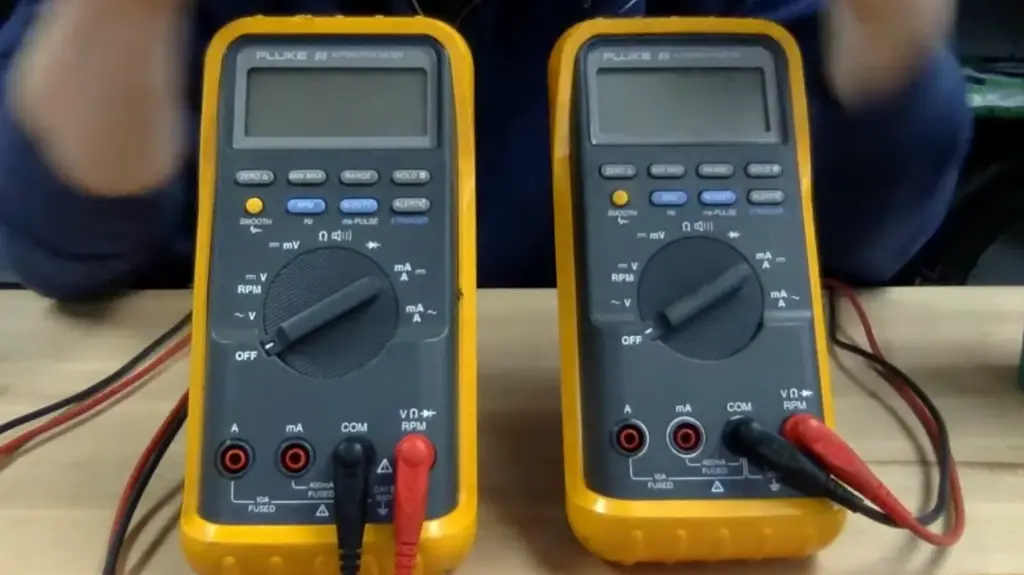
Faulty probes
The tips of the multimeter’s probes should be clean and free from corrosion. If they are dirty or corroded, it can cause incorrect readings when measuring DC voltage. Make sure each probe tip is clean before use.
Incorrect settings
Different kinds of measurements require different settings on the multimeter. Ensure that you have selected the appropriate setting for measuring DC voltage before attempting a measurement. [1]
Broken internal components
Incorrect wiringUsing incorrect wiring can cause errors in multimeter readings. Ensure that all connections are secure and that the polarity of the circuit is correct before attempting any measurement.
Excessive current
Multimeters are not designed to handle high currents. Excessive current passing through the device can damage internal components, resulting in inaccurate readings when measuring DC voltage. A qualified electrician should be consulted if you suspect high current levels in your circuit.
Fuse blown
Multimeters come with a built-in fuse for protection. If the fuse has blown, it will need to be replaced by a qualified technician in order to restore accurate DC voltage readings.
Once you have identified and addressed any of these issues, your multimeter should be able to read DC voltage accurately again. Be sure to consult a qualified professional if you are unsure how to resolve the problem safely. [2]
How to Fix?
There are several steps you can take to troubleshoot and fix a multimeter not reading DC voltage. First, check the voltage range settings of your multimeter. Make sure they are set correctly for the range of voltages you wish to measure. Also, make sure that the correct cable leads are connected to both the multimeter and the item being tested.
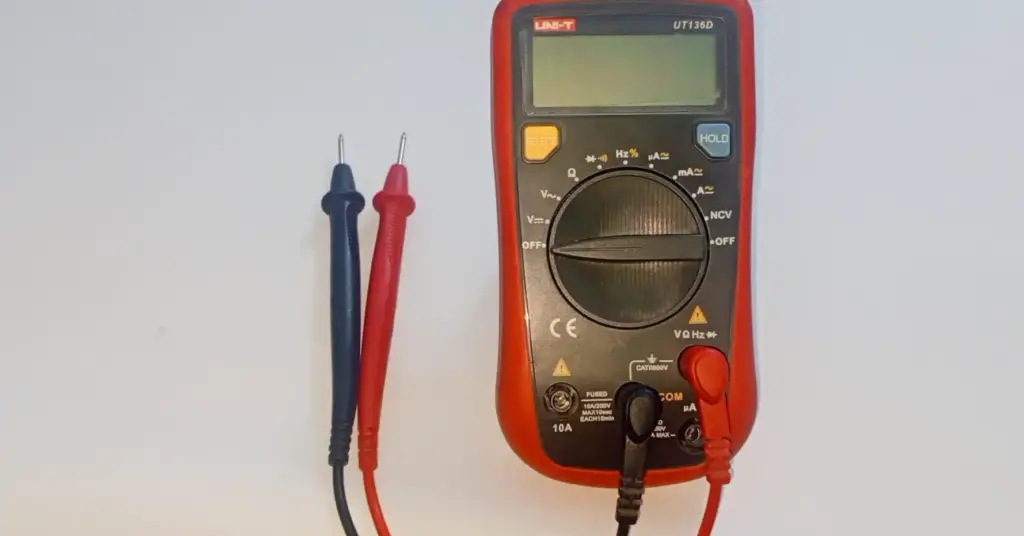
Check if there is a broken connection in any of the cables or probes connecting your multimeter to your test item. If so, replace them with new cables and/or probes. You may also want to clean off all contacts and terminals on both ends of each cable before testing again.
If your multimeter still isn’t functioning properly, then an internal component may be damaged. This could range from a loose or broken connection to a more serious issue like a faulty switch or resistor. In this case, it is best to take your multimeter to a professional for repair and maintenance.
If you are still having difficulty understanding how to fix your multimeter not reading DC voltage, look up tutorials online for detailed step-by-step instructions on proper testing and troubleshooting procedures. There are many helpful videos and articles out there that can walk you through the process of properly diagnosing and repairing your multimeter’s issues. Additionally, consider seeking help from an experienced electronics technician who can provide valuable advice and insights into solving the problem quickly and effectively. With the right tools, knowledge, and assistance, you can get your multimeter back to working order in no time.
Other Things to Do When Troubleshooting A Multimeter
- Make sure to follow the manufacturer’s instructions for your particular multimeter model.
- Check the wire terminals and battery connections of your multimeter for any corrosion or damage that may be interfering with its functionality.
- Verify that all leads are connected in the proper sequence as outlined by the manufacturer’s manual (red lead should always go into the “positive” jack).
- Compare readings on your multimeter against those on an accurate reference meter to ensure accuracy of measurement data.
- Perform a continuity test, which can help determine if a circuit is open or closed and/or detect shorts in wiring or components within the unit being tested.
- Replace any damaged wires, cables, or probes before attempting to use your multimeter again.
- Have a qualified technician perform any necessary repairs or maintenance on your multimeter if you are unable to do so yourself.
- Store your multimeter in its case and away from heat, moisture and dust when not in use.
With these tips, you should be able to fix a multimeter not reading DC voltage quickly and confidently.

How To Test If A Multimeter Is Working?
If you are attempting to measure DC voltage with your multimeter and it is not giving you an accurate or consistent reading, there may be a few issues that should be tested. It is important to make sure the battery in the device is working correctly as well as check the connections from the device to your power source. You should also make sure that all of the settings on your multimeter are correct for measuring DC voltage.
To test if your multimeter is working properly, try testing it with another known voltage source such as a 9-volt battery. Connect the positive lead of your multimeter to one end of the battery and then connect the negative lead to the other end of the battery. If you get an accurate reading on the display, then your device is working properly and you can move on to troubleshooting other potential issues.
If you do not get an accurate reading from the multimeter, then you should check some of the internal components to make sure they are in working condition. You may need to replace the battery or examine any wires that connect internally for signs of wear or damage. If none of these solutions work, then it may be time to invest in a new multimeter as the current one may have trouble testing DC voltage consistently. [4]
How To Use A Multimeter Safely?
Using a multimeter can be dangerous, even when used properly. To ensure your safety, here are some important guidelines to bear in mind:
- Always verify that the multimeter is set to the correct range before measuring any voltage or current. This prevents you from measuring higher voltages than your meter can handle and damaging it.
- Before taking any measurements, make sure all power sources are disconnected and the circuit is dead. This helps to avoid electric shocks and other potential hazards that could occur if you measure something live with too much voltage or current.
- Use proper probes for each type of measurement; never try to use a single probe for multiple types of measurements as this can cause incorrect readings or damage to the multimeter.
- Do not touch any surfaces that could be live with electricity; always use proper insulation and keep your hands dry when possible.
- Be sure to check for any signs of wear and tear on the multimeter before using it, such as cracks, faulty wiring, or loose connections which can lead to incorrect readings or electric shocks.
Following these basic safety guidelines will help you get accurate readings from your multimeter and ensure your own safety when measuring voltage or current in a circuit. [5]
How To Avoid Reading The Wrong Voltage With A Multimeter?
When using a multimeter to read voltages, it’s important to first select the correct range of voltage. The wrong range selection can lead to incorrect readings. To avoid this, you should use the highest range setting that is closest to the expected reading. You should also ensure that you are connecting the probes correctly with red connected to positive and black connected to negative.
If your multimeter still isn’t giving you an accurate reading, check for any other connections within your circuit that might be causing interference or noise in the reading. Make sure all connections are secure and there are no sources of excess current that could be affecting your measurements. Also check for any damaged wiring, which would result in inaccurate readings as well.
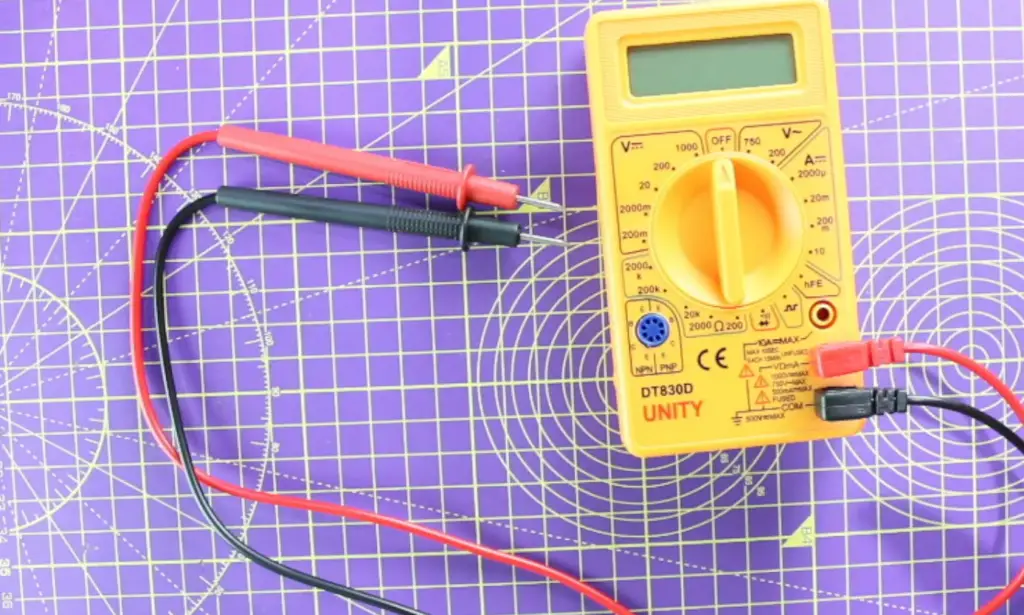
How To Measure DC Voltage With A Digital Multimeter?
Measuring DC voltage with a digital multimeter is a straightforward process. You will need to ensure that the multimeter is properly set up for this task and that you are aware of the safety steps you should take before attempting any measurements. Once everything is in place, all you need to do is select the proper range setting on your multimeter, connect it to the circuit or component being tested, and read off the displayed value.
Before taking any measurement, make sure that your digital multimeter is set up correctly. The settings and ranges for measuring DC voltage can vary from one meter to another, so consult the instruction manual that came with your device first. Generally speaking, most meters have both AC and DC voltage settings which you can select from the main menu. Select the DC voltage option for measuring DC voltage.
The next step is to ensure that you are taking all necessary safety precautions before attempting any measurements, such as ensuring your hands are dry and wearing appropriate safety gear if necessary. When you’re ready to take the measurement, connect one lead of the multimeter to the positive terminal of the circuit and insert the other lead into a ground or common point. The display should indicate either a digital number or analog bar graph reading that corresponds to the measured voltage level in Volts (V).
This makes it easier to take accurate measurements without having to change the meter’s settings manually. However, if your multimeter does not have autoranging capabilities, make sure that you are selecting the proper range setting for the voltage levels being tested.
That’s all there is to measuring DC voltage with a digital multimeter! Just remember to take all necessary safety precautions before attempting any measurements and that you should consult your device’s instruction manual for further information on its specific features and functions. With these tips in mind, you can troubleshoot and diagnose circuit problems much more easily. [6]
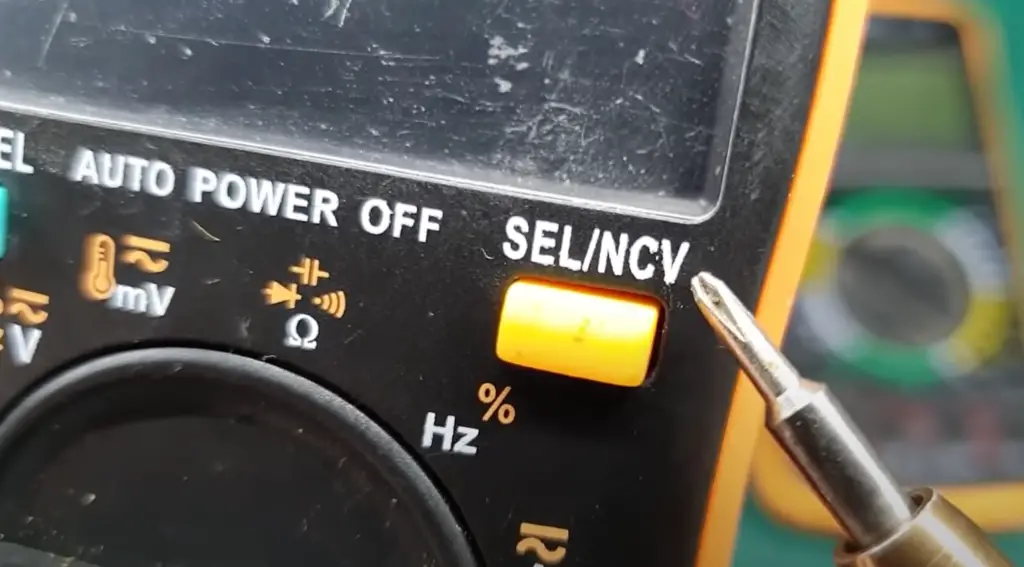
FAQ
Why is my multimeter DC voltage not working?
This could be due to a few different factors. It could be that the multimeter is not set up properly, or it could be an issue with the battery or wiring of your multimeter. Make sure that you have read and followed all instructions for setting up and using your multimeter correctly first before attempting to diagnose other possible issues. If this does not provide a solution, then there may be another problem with the device itself. Check if there are any visible signs of damage to the multimeter, and if so take it in for repair or replace it altogether. In some cases, calibration of the device may need to occur in order for accurate readings to take place. You should consult your user manual or contact your manufacturer’s customer service for help.
How do I troubleshoot a multimeter DC voltage issue?
The first step is to check that the multimeter is set up correctly and that all of its components are in working order. Double-check the wiring and battery connections, and make sure that your multimeter is turned on. Then take a few readings using the device to ensure that it’s functioning properly. If you are still not getting accurate readings, then calibrate your multimeter according to the instructions provided by the manufacturer. If this does not solve the problem, you may need to replace or repair your device depending on what exactly is wrong with it. Lastly, if all else fails, contact customer support from your manufacturer as they should be able to help you out.
What could cause a multimeter DC voltage not to work?
There are several potential issues that could lead to your multimeter DC voltage not working properly. These include incorrect setup of the device, damaged wiring or battery connections, a faulty power source, or a calibration issue with the multimeter itself. Make sure that you have checked all of these factors before contacting customer service for help. Additionally, if your device is older than five years it may be time to upgrade as most devices should last for up to five years with proper maintenance and use.
What setting is DC voltage?
When using a multimeter to measure DC voltage, the proper setting must be selected. If measuring DC voltage, select the “DCV” (direct current volts) mode on the multimeter dial. This will ensure that you are accurately reading the correct measurement for DC. An incorrect setting can cause inaccurate readings or no readings at all. If your multimeter is still not reading DC voltage even after selecting the appropriate setting, check the battery and connections in your device. Make sure that both the red and black leads of your multimeter are connected properly to their respective terminals on the circuit board being tested. Additionally, make sure that you are using an appropriately sized fuse for this type of circuit; if it is too small, then it will not be able to handle the amount of current being drawn.
What are common DC faults?
When a multimeter is not reading DC voltage, there are several possible causes of this issue. Common faults include loose connections, incorrect wiring or settings on the meter, and issues with the battery or power supply. Loose connections can cause erratic readings and may be fixed by tightening any existing connections or replacing any corroded or damaged plugs. Incorrect wiring or settings on the meter can also result in inaccurate readings; make sure that the meter is properly connected to the circuit and that it has been set up correctly according to the manufacturer’s instructions. Issues with batteries or power supplies can sometimes cause problems as well; check to make sure that all required voltages are present and that nothing has become disconnected. If any of these issues persist, then it may be time to replace the multimeter.
Useful Video: How to repair wrong value in multimeter [wrong Volt, amp reading]
Conclusion
If your multimeter is not reading DC voltage correctly, it’s important to identify and resolve the issue. Common causes of this problem include a malfunctioning multimeter, faulty batteries, worn leads and other electrical components, improper use of the multimeter, and incorrect settings. To fix this problem, troubleshoot each of these issues one at a time. Start by inspecting the multimeter for any damage or faults; then make sure to use fresh batteries and check that all connections are secure. Confirm that you have set the dials to measure DC voltage and ensure that the leads are properly connected to the device under test. If none of these solutions fix your issue, consider contacting a professional for help with repairing or replacing your multimeter. With these tips, you can easily troubleshoot and repair your multimeter so that it’s able to measure DC voltage correctly.
References
- https://www.circuitspecialists.com/blogs/news/dmm-troubleshooting-repair
- https://electronicguidebook.com/5-reasons-your-multimeter-is-reading-the-wrong-voltage/
- https://electronicshacks.com/multimeter-not-working/
- https://www.centraltis.com/news/step-by-step-how-to-for-troubleshoot-with-a-multimeter/
- https://electronics.stackexchange.com/questions/516759/how-can-i-fix-my-multimeter-which-consistently-shows-0-for-ac-voltage
- https://www.fluke.com/en/learn/blog/digital-multimeters/how-to-measure-dc-voltage-with-a-digital-multimeter





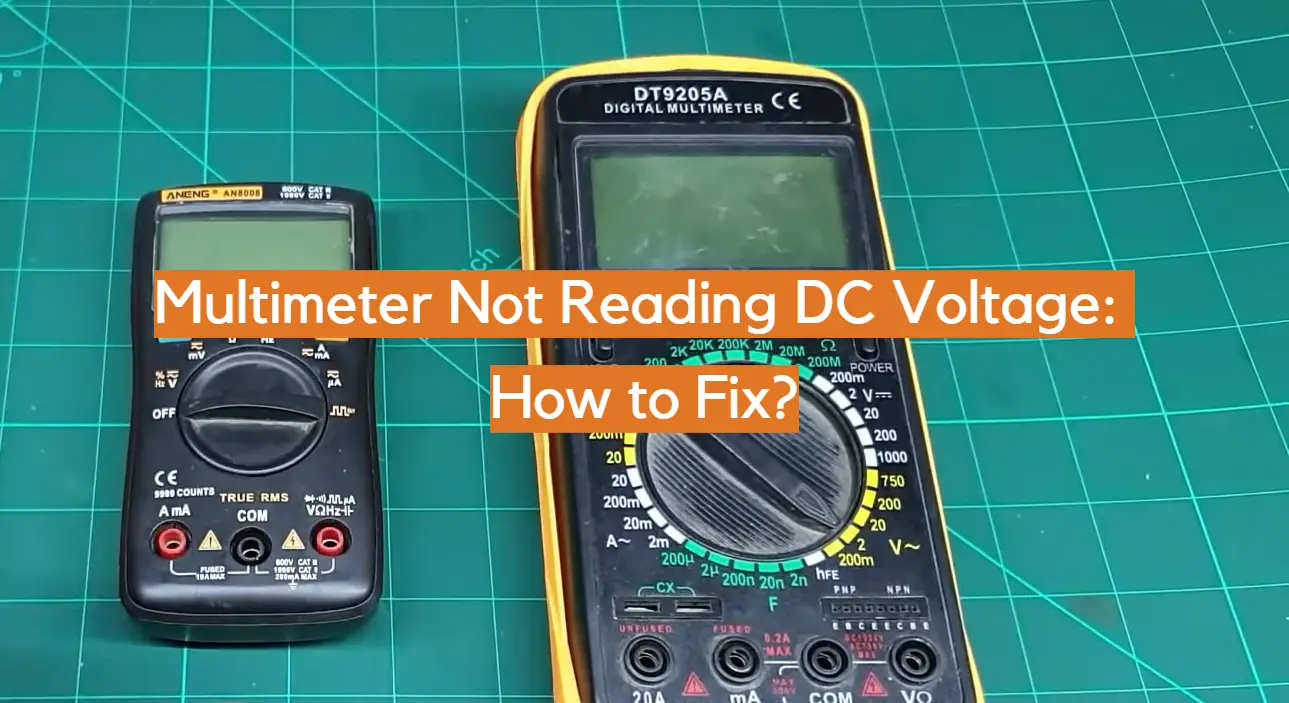








Leave a Reply